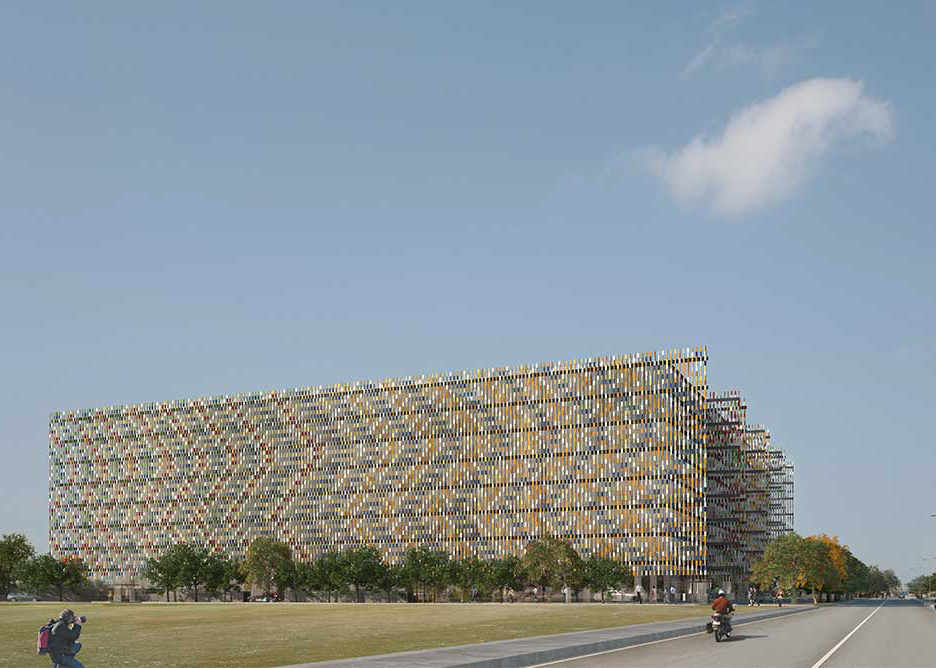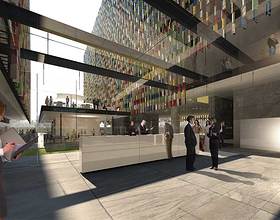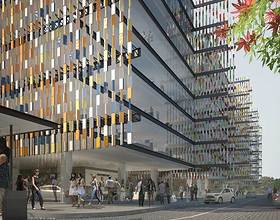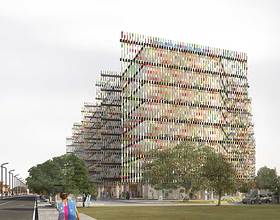LEHARIYA
-
The Lehariya project defines a cluster through the articulation of four buildings laid out like a system of parallel fingers slightly tapered to open the internal spaces towards the view of the landscape. The ground floor dedicated to retail is totally open to the city. The upper floors are designed as extremely flexible open-plan offices. The buildings are encased by vertical screens, which extend themselves beyond the buildings, creating an overlapping effect of progressive transparency when seen from the street, while addressing the specific climatic conditions of Jaipur by functioning like vertical canopies that shade the buildings. Just like a textile, the screens are created by an interlaced structural system of tana (warp) and bana (weft), composing a system of 60,000 vertical ceramic baguettes woven onto vertical metal bars, so as to appear as a macro textile protecting the buildings. The design of the façade has been developed in collaboration with local artists morphing the traditional pattern of Lehariya with parametric modelling, incorporating climatic and technical requirements. The chromatic palette references traditional colours and characterizes each screen differently. In this way each court acquires a different specific identity. The design intent is to reinforce the sense of place, promoting the sense of community, sharing the same values connected to local roots and enhancing the individual identities of the people. The screens forming the façades are thought as a medium to re-connect contemporary architecture to the art & craft traditional of Jaipur: the ceramic baguettes, hand-made by the craft producers from Rajasthan, broaden the meaning of multiplicity, where repetition (handmade) is not mere multiplication (industrial mass production), but a way to demonstrate the magnificence of local materials and iconography.
Photo credits: OBR Open Building Research
1870 Projects









